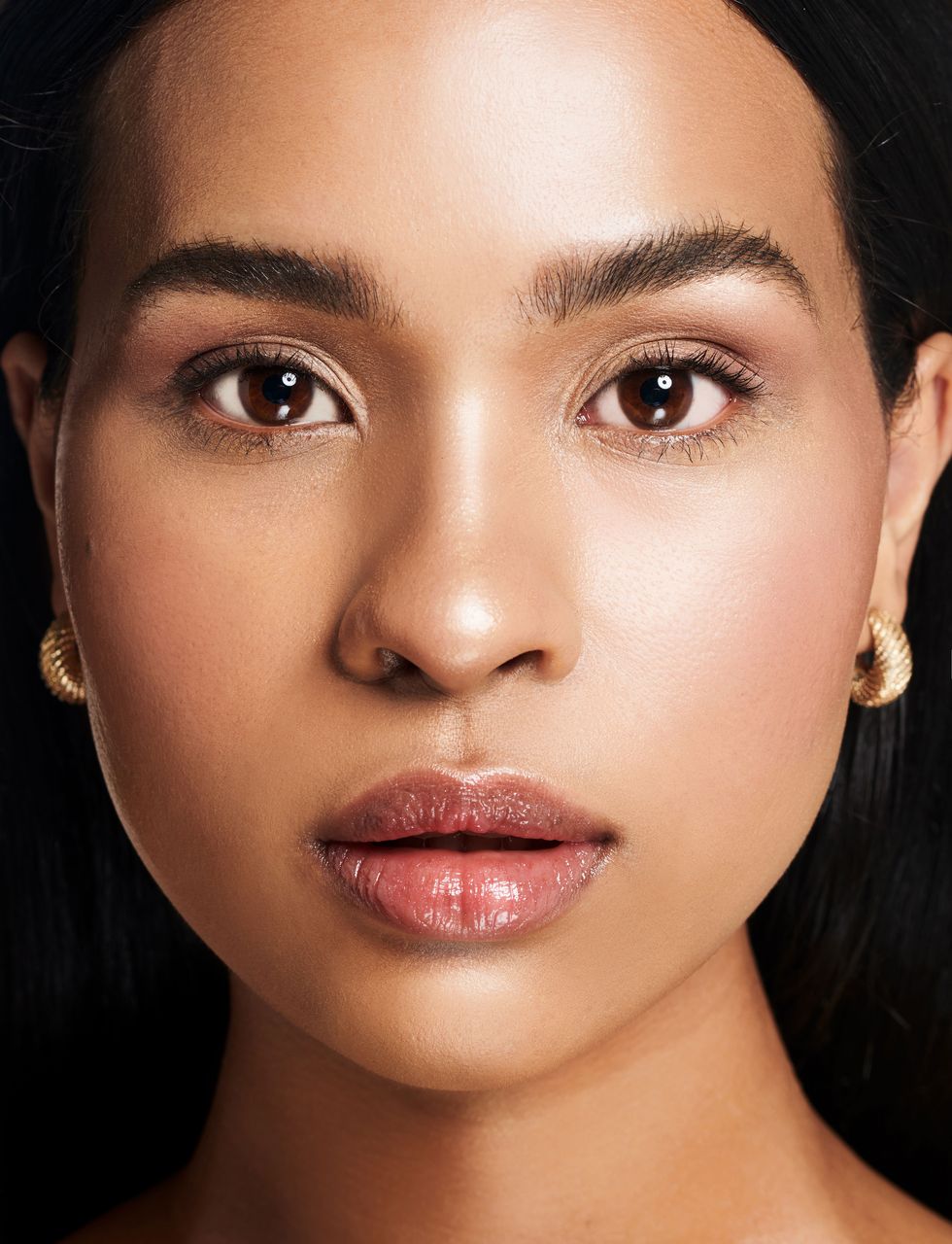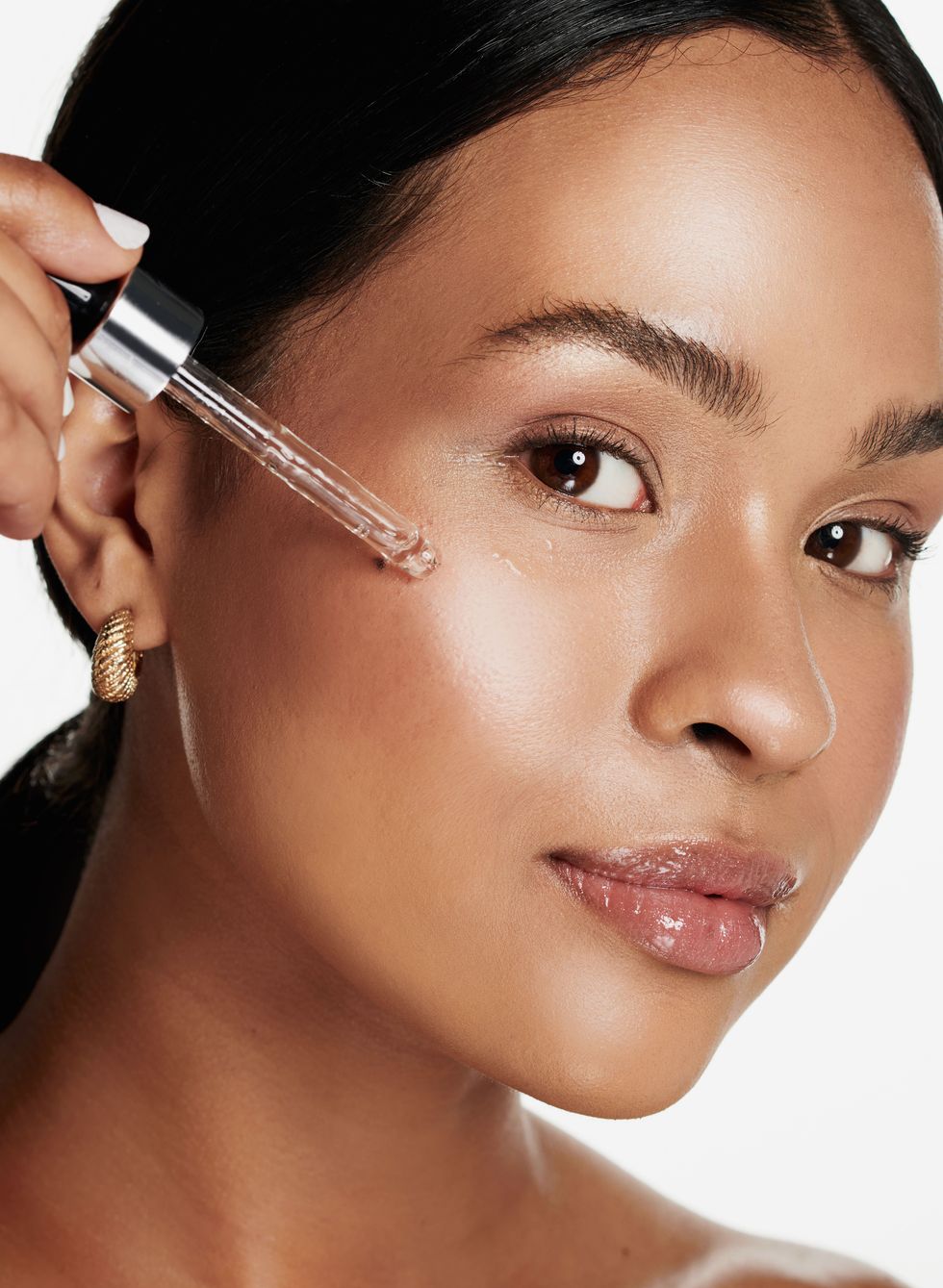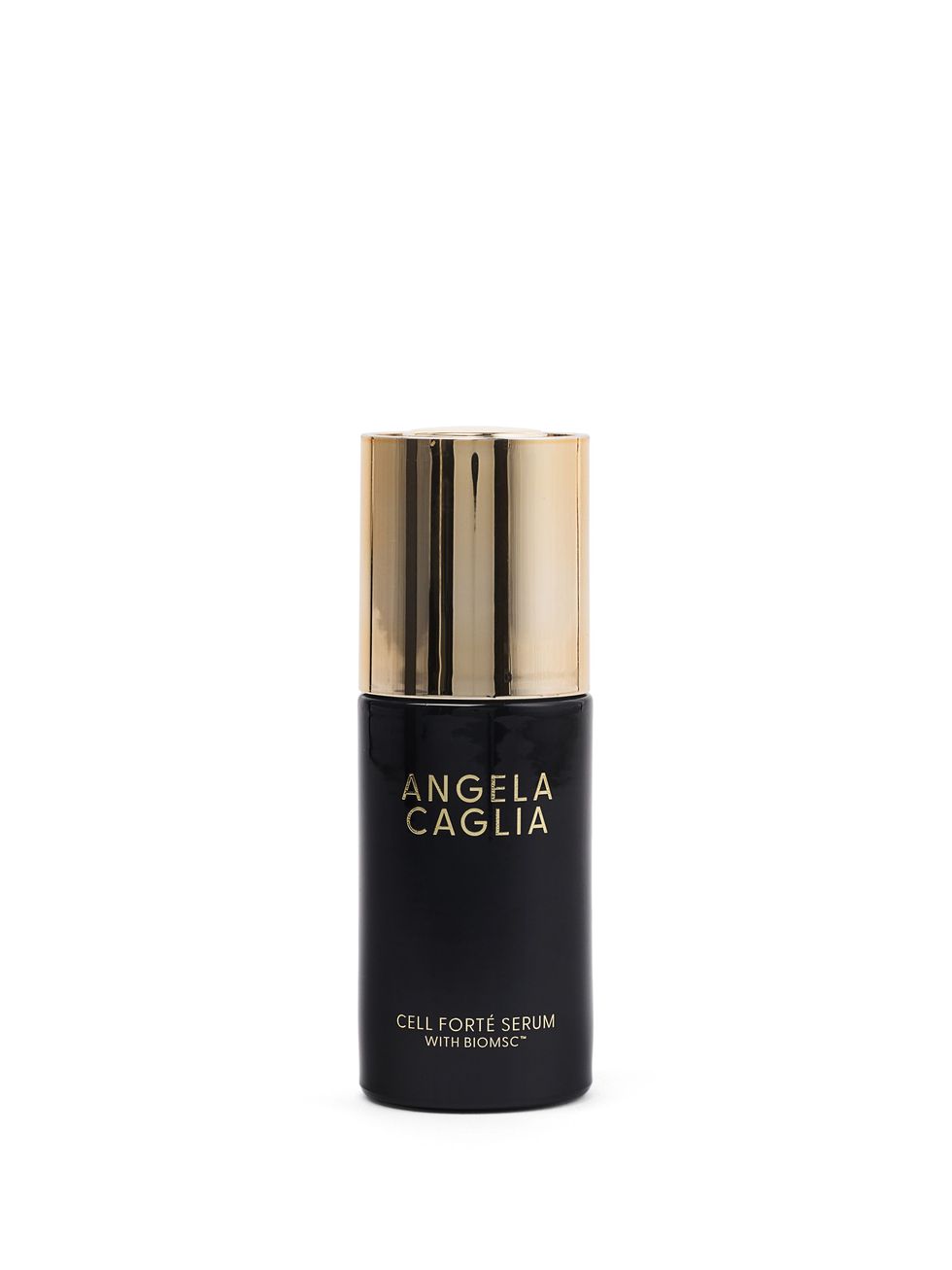Everything You Need to Know About Exosomes
Exosomes—the latest buzzword throughout the industry—with promises of combatting hair loss and improving the health of your skin. But what are they and more importantly, why is everyone talking about them? “Think of exosomes as little tiny, ‘prime’ packages coming to save the day. Each cell (mostly) in the human body secretes these packages filled with genetic material, lipids, proteins, growth factors, and other tools that, when secreted from one cell, activate another to work magic,” explains Dr. Mona Gohara, Associate Clinical Professor of Dermatology, Yale School of Medicine. Still confused? Don’t worry—we spoke with Dr. Gohara, along with Dr. Sarayana Wyles, MD, PhD, a Dermatologist with the Mayo Clinic in Rochester, Minnesota, specializing in Regenerative Biotherapeutics, and Dafna Gershoony, PA-C, CEO of ContŌR to help us better understand, in simple terms, exosomes treatment, how exosomes work, their benefits, and how to incorporate them into your beauty routine. Consider this a crash course guide to help you ELLEvate, your knowledge on exosomes. Keep reading to discover a secret weapon to better skin and thicker hair.
What are exosomes?
Personally, what helped me to understand exosomes was comparing them to real life things. For example, exosomes are like FedEx, and their packages include growth factors, which promote cell turnover. “Exosomes are small carrier vesicles which contain “cargo” of bioactive proteins, growth factors, and nucleic acids,” says Gershoony. Or, in simpler terms, she explains, “Exosomes are small messenger molecules which help the different cells in your body communicate. If you were to imagine your body as a small city, exosomes would be equivalent to the postal service delivering messages from cell to cell.”
What is exosome therapy?
Gershoony is the CEO of Contōr, a luxury medical spa in SoHo, offering exosomes as an option for regenerative microneedling. “Exosomes are gaining widespread recognition for their potential to be used in many different applications of medicine. Exosomes are mainly being studied for their ability to heal wounds quickly and decrease inflammation. They are particularly popular in aesthetics and can be used to speed up the healing time after certain procedures,” she says. Exosomes are currently being offered topically for skin and hair rejuvenation, with positive results on both fronts.
How are exosomes beneficial to your skin care routine?
Regenerative. Rejuvenation. Restorative. These words are often used to describe the benefits and effects of exosomes and skin. “It can drastically reduce wound healing times, noticeably reduce the appearance of age-related pigmentation, increase firmness in skin, reduce fine lines and wrinkles, hydrate and nourish the skin, and promote the production of collagen and elastin,” says Gershoony. She discusses a recent split face study, in which patients who received microneedling had exosomes applied to one side of their face after the procedure and not the other. The side with exosome application post-treatment saw an 11.3% increase in elastin, a protein contributing to the “bounciness” of the skin, whereas the side without exosome application saw no significant improvement.
Exosomes can provide similar benefits to stem cell therapy without many of the unwanted side effects. “Stem cells are live cells while exosomes are just small messenger molecules, for example, debris cast off from a stem cell,” explains Gershoony. “Because exosomes are not live, they greatly reduce the risk of adverse effects such as immune rejection, tumor formation, and infection, which can happen with stem cell transplantation,” she adds. Because exosomes are purified and measured in a lab, the concentration is not as variable as something like PRP, which depends on your body’s ability to make platelets and growth factors, yielding better results.
When using exosomes as an addition to your skincare routine and maintenance, Dr. Gohara suggests getting a treatment and using the topicals as maintenance “at night, after retinoid, and before moisturizing.” She explains that “nighttime is when our skin naturally regenerates and skin cells are turning over, our skin factory is open at night. That is when it should be used!”
What are safe ways to use exosomes?
It’s clear that there are a lot of benefits to exosomes; however, currently, the only way for consumers to use and benefit from exosomes is topically. If someone offers to inject exosomes into your skin or scalp—run. “People are using it after a microneedling or laser procedure, something that creates intentional little traumas to the skin, applying the exosomes, these prime little packages filled with goodness helps to activate cells involved with wound healing or sleepy cells once responsible for rejuvenation,” says Dr. Gohara. “Exosomes are the hottest trend in the beauty industry, yet there is great variability in its technology starting from the source to biomanufacturing. There are currently no FDA-approved indications for exosome use outside of the cosmetic space,” says Dr. Wyles.
What are some green flags to look for in exosome therapy?
“A board-certified dermatologist should be administering the treatment to ensure that it is a legitimate product and not a knockoff that is doing nothing except costing you money,” says Dr. Gohara before adding, ‘If used in the right context, they can be transformative for hair growth, wound healing, and rejuvenation.” The use of exosomes is ideal for someone who may be squeamish about getting their blood drawn or isn’t interested in a neuromodulator or filler. Dr, Wyles adds that, “Consumers should also look for green flags such as human derived sourcing for a cell-free product such as platelets, which are small cell fragments that do not contain genomic DNA, and natural proponents of skin healing and regeneration.”
Most exosomes available for aesthetic purposes are not considered medications and are not intended to be injected into the body. “With respect to microneedling, exosomes are applied topically to the skin to decrease healing time; this is different from an injection into the body,” states Gershoony. Her green flags include “sterile single-use vials, companies which use a strict purification process, and the right medical professional using these products.”
What are some red flags to look for in exosome therapy?
Exosomes are a new frontier in skin care and Dr. Wyles encourages consumers to look for companies that are transparent about their process with exosomes and where they are getting it from. “Consumers should look for red flags such as companies who are neglecting to perform FDA studies and do not have the sophistication to ensure safe and ethical exosome sourcing,” she says.
What are some topical, over the counter options for exosomes in skin care?
It seems that more and more companies promising better skin are popping up on the market, offering better, healthier skin. However, which over the counter topicals can you really trust? “Topical products without the in office treatment are harder because they may not penetrate the skin enough to make that powerful difference,” says Dr. Gohara. “It’s like opening the ketchup but not breaking the seal! The burger may never see it. Same concept. There may be a small benefit imparted, but not to a large degree,” she explains.
However, for celebrity esthetician Angela Caglia, exosomes are just the side product of what her Cell Forte Serum, powered by BIOMSC, a protein-rich liquid, delivers. “The formula contains much more than exosomes. It’s a pull of thousands of growth factors, fibronectin, pro-collagen peptides, essential fatty acids, free radicals fighting antioxidants, hyaluronic acids at different molecular weights, snow mushroom, and a biomimetic active delivery system that helps restore and maintain the integrity of the skin barrier while helping carry active ingredients into deeper layers of the skin,” says Caglia. Their patented human mesenchymal stem cell conditioned media—sans DNA—arrives freshly frozen to their experienced formulator.
Gershoony explains that over the counter exosomes can be “tricky” as “exosomes are known to be unstable and have a short half life, and must be stored at a specific temperature.” Caglia doesn’t necessarily disagree with this. “It’s unknown if the exosomes are stable after the products are formulated. They probably are not,” she admits, but adds, “It still doesn’t mean the components wouldn’t be helpful in the overall formulation.” Caglia stresses what’s important is the thousands of epidermal growth factors and proteins in her formula, which she boasts is “shelf-stable” and reduces the signs of biological aging along with the added synthetic exosomes and peptides in their proprietary BIOMSC. Caglia shared that she used shelf-stable, bio-identical exosomes and peptides added to the patented stem cell conditioned media for maximum efficacy of exosomes in the formula. Basically, what’s important In Cell Forte Serum’s formula is the patented stem cell conditioned media, not the exosomes. Still, Gershoony remains doubtful. “Some over the counter serums claim to have exosomes, but they might use plant-based exosomes that don’t really interact well with human cells, making them just marketing hype,” she says matter-of-factly.
Plated SkinScience is another exosome serum that has focused its distribution not in Sephora but rather in doctor’s offices for patients to use their topical formulas post treatment. This company was founded by physician-scientists who devoted over 15 years of research in state-of-the-art laboratories to uncover the renewing power of platelets. Their scientific discovery led to proprietary Renewosome technology that makes the Plated SkinScience line completely shelf stable, which the company boasts is its formula claim to fame. “What sets Plated apart from typical processes involving mesenchymal stem cell (MSC) derived exosomes is our innovative approach with platelets. Unlike methods that often require labor intensive lab expansion, as well as harsh filtration and centrifugation steps, Plated’s process is streamlined and efficient,” says Alisa Lask, CEO of Rion Aesthetics, the parent company to Plated SkinScience. Basically, by working with platelets, they can derive stable exosomes capable of delivering their renewing poser consistently.
What is it like using an exosome based serum?
As a beauty director who loves trying the latest products, I’ve used both serums. I used them for a month each (realistically, I should have probably used them for two months each), but within the month, I can tell you what I noticed, forgoing all my other skin care products and only using the serum. First off, Cell Forte Serum is watery. I was a bit shocked when I first started to use it because it didn’t feel like a traditional serum with body to its formula. Nevertheless, the benefit of its consistency is that it quickly absorbed into my skin. After a month of consistent use, I noticed that my fine lines seemed to soften slightly; however, the minute I stopped using the product, I noticed my skin quickly changed.
When using Plated SkinScience, I immediately went to their “Intense Serum,” which is offered to patients after facial plastic surgery or in office treatments. I used this and within two weeks, I noticed a difference in my skin—it looked slightly dull. The dullness, a dermatologist told me, was due to the fact my skin was actually turning over cells more quickly, and I needed to stick to exfoliation within my skincare routine. I was shocked. I remember one night I had a red bump, that looked like the beginning of a pesky pimple. I applied nothing additional to my skin except for PlatedSkin Science Intense Serum. I woke up with no redness on my face. Plated SkinScience also seemed to reduce my fine lines and wrinkles, but I also noticed that when I stopped using the product, my skin reverted to how it looked. Plated SkinScience Intense Serum felt more tacky on my skin in comparison to the Cell Forte Serum, and I was instructed to let it dry and absorb completely before applying anything else.
I like using a serum with growth factors, but I must admit, I was missing the other parts of my skin care routine—my moisturizer, my hyaluronic acid. Both over the counter offerings stated that I didn’t need to use any other serums, as the formulas contained everything I needed, and Plated SkinScience encouraged that I even forgo—gasp—my moisturizer (which yes, I did, however, on their website, they say you can use other products). While I know these are first-to-market products, it is imperative consumers are better educated on the idea that less is more, when it comes to some topicals. While I still use these products, I use Plated when I have more time (it took 10 to 15 minutes for the serum to fully dry and absorb into my skin) and Cell Forte Serum when I want to use other products as well. It was discouraged that I use these products with other products because they haven’t been tested. Personally, while I was willing to forgo my hyaluronic acid and moisturizer, I absolutely used face sunscreen—I just waited 20 minutes before applying (which meant, some days, I forgot to apply).
At what age should you consider using exosomes in your skin care routine?
Dr. Gohara suggests beginning exosomes in your 30s as this is “when collagen, hyaluronic acid, and exosomes slow down, also when sun damage and genes begin to show on the skin,” she says. “Anyone who wants to even out skin tone, help with scars, pores, fine lines, sagging, or texture of the skin is a candidate for a treatment,” adds Dr. Gohara.
Where do you see the future of exosomes in skin care?
The field of regenerative aesthetics is starting to bloom. “Exosomes, or extracellular nanoparticles, are at the core of this advancement to target the root cause of skin aging,” explains Dr. Wyles, who oversaw clinical trials for Plated SkinScience. “We are only at the top of the iceberg in understanding exosome technology, including the ideal source, biomanufacturing, and stability factors,” she says. Continued research and clinical studies are necessary to inform science and consumers about the possibilities of exosomes, which Dr. Wyles calls “the biggest leap forward in skincare since the advent of retinol.”
Meet the Experts
Dr. Mona Gohara, Associate Clinical Professor of Dermatology, Yale School of Medicine
Dr. Sarayana Wyles, MD, PhD, a Dermatologist with the Mayo Clinic in Rochester, Minnesota, specializing in Regenerative Biotherapeutics
Dafna Gershoony, PA-C, CEO and Co-Founder of ContŌR
Angela Caglia, celebrity aesthetician, founder of Angela Caglia Skincare
Alisa Lask, CEO of Rion Aesthetics
Why Trust ELLE Beauty?
Danielle James is ELLE’s digital beauty director and is always on the hunt for new topicals and treatments that can help her avoid getting Botox or injectables. An avid skin care junkie, James has no problem being a glorified guinea pig for the latest and greatest products.
Danielle James is the Digital Beauty Director of ELLE.com. Previously, she was the Fashion and Beauty Director of HelloBeautiful.com and MadameNoire.com. She’s written for The Cut, InStyle, Allure, The Business of Fashion, Nylon, Essence, Good Housekeeping, and more. She enjoys sailing, thrifting, Japanese whiskey, Naomi Campbell’s runway walk, and Rihanna in the comment section.







